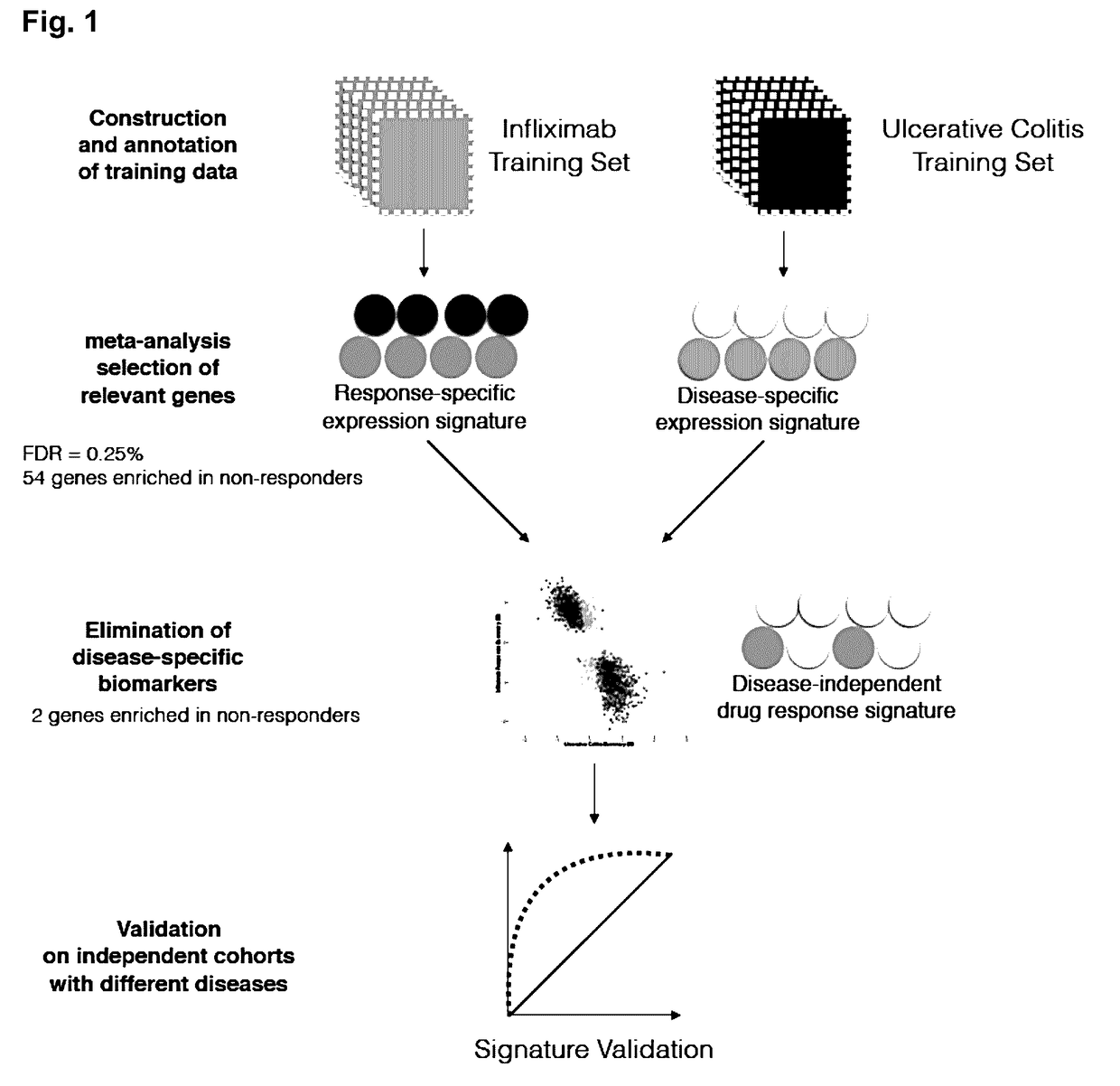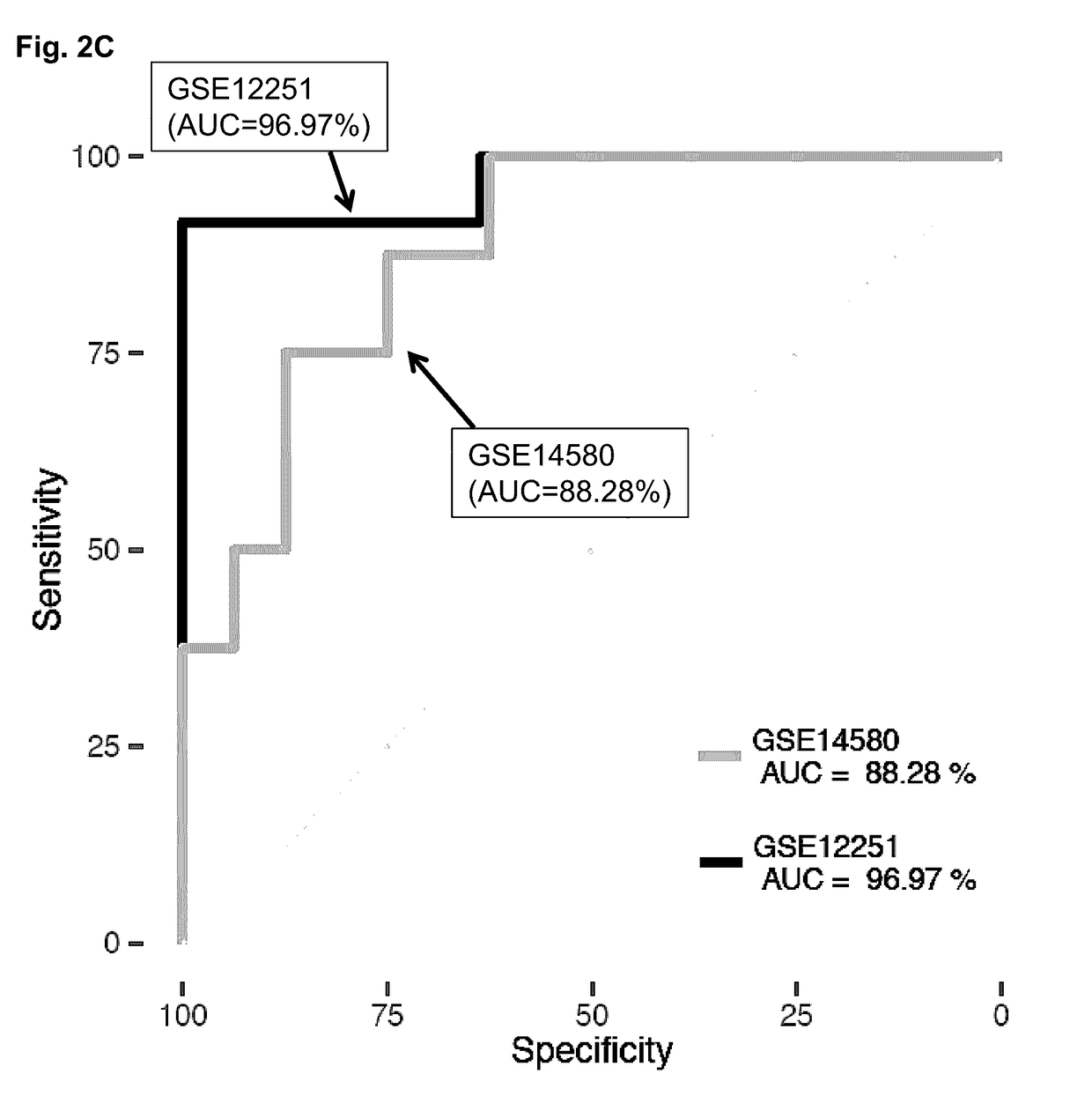Methods and compositions for assessing predicting responsiveness to a TNF inhibitor
a technology of predicting responsiveness and composition, which is applied in the field of methods and compositions for assessing predicting responsiveness to tnf inhibitors, can solve the problems of dramatic increase health-care costs, harming patients, and reducing the effect of tnf inhibitors
- Summary
- Abstract
- Description
- Claims
- Application Information
AI Technical Summary
Benefits of technology
Problems solved by technology
Method used
Image
Examples
example 1
[0162]The following example demonstrates the development of a method based on meta-analysis of gene expression data to identify biomarkers that translate across multiple diseases. As a proof of concept, an initial disease-specific signature of robust biomarkers in IBD was identified by training and validating on independent datasets. The disease-specific component of the signature was subsequently removed by integrating a gene expression model of IBD, thus creating a disease-independent signature. The disease-independent signature can include the expression products (e.g., RNA, protein) of two genes (e.g., IL11 and / or RGS1).
[0163]The disease-independent signature performs equally well as the original IBD-specific signature when predicting which IBD patients will respond to Infliximab (a TNFi). Finally, the performance of the disease-centered and disease-independent signatures were compared in a different type of autoimmune disorder (Psoriasis), and a marked and statistically signifi...
example 2
[0184]FIG. 9 depicts immunodetection (immunostaining), performed using an anti-RGS1 antibody, of a paraffin embedded colon biopsy from a patient that is responsive to treatment with TNFα. Scale bar is 100 μm. This figure demonstrates that antibody-based methods can be used to detect RGS1 in patients, e.g., those that have inflammatory bowel disease (IBD).
PUM
| Property | Measurement | Unit |
|---|---|---|
| dissociation constant | aaaaa | aaaaa |
| dissociation constant | aaaaa | aaaaa |
| dissociation constant | aaaaa | aaaaa |
Abstract
Description
Claims
Application Information
 Login to View More
Login to View More - R&D
- Intellectual Property
- Life Sciences
- Materials
- Tech Scout
- Unparalleled Data Quality
- Higher Quality Content
- 60% Fewer Hallucinations
Browse by: Latest US Patents, China's latest patents, Technical Efficacy Thesaurus, Application Domain, Technology Topic, Popular Technical Reports.
© 2025 PatSnap. All rights reserved.Legal|Privacy policy|Modern Slavery Act Transparency Statement|Sitemap|About US| Contact US: help@patsnap.com



